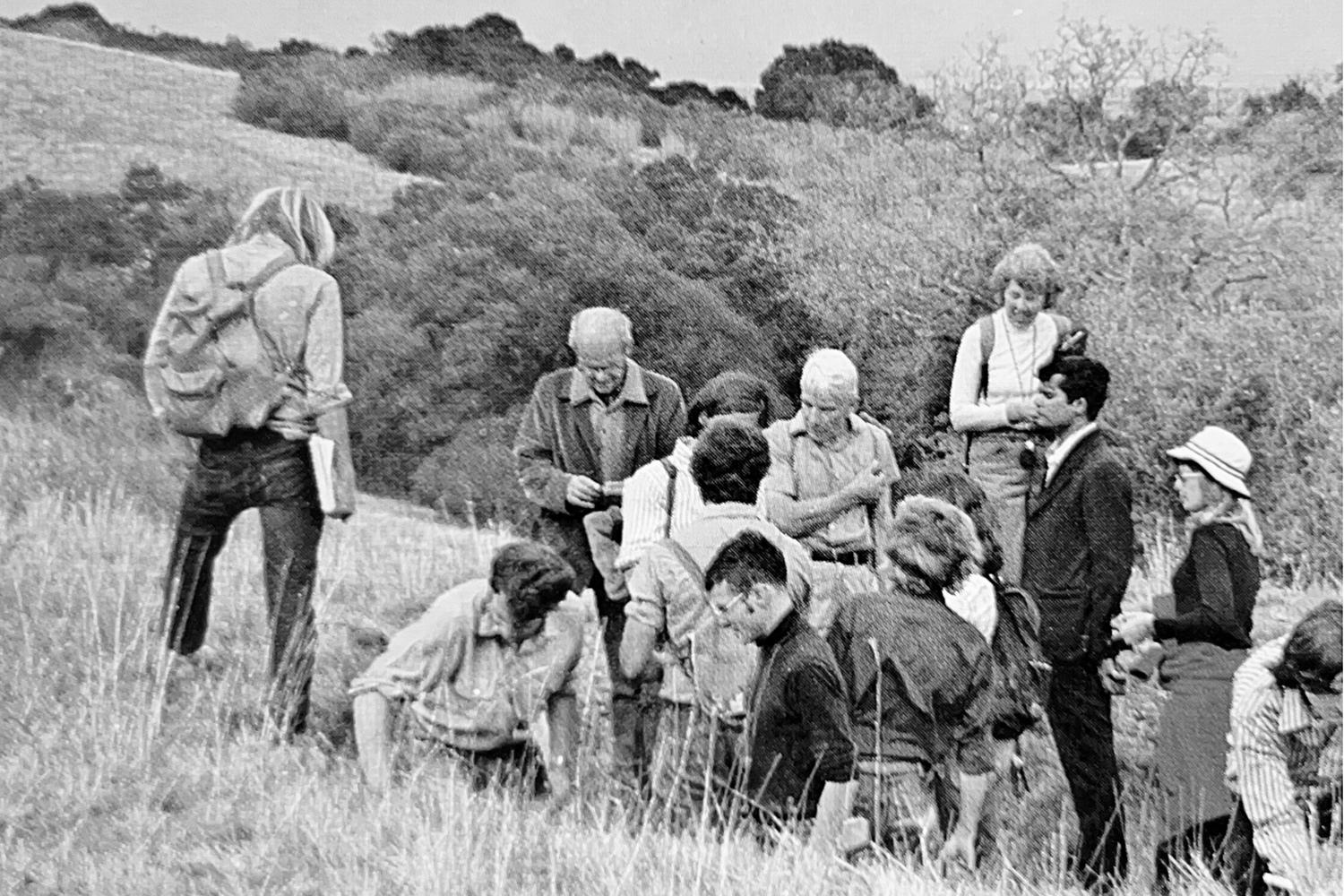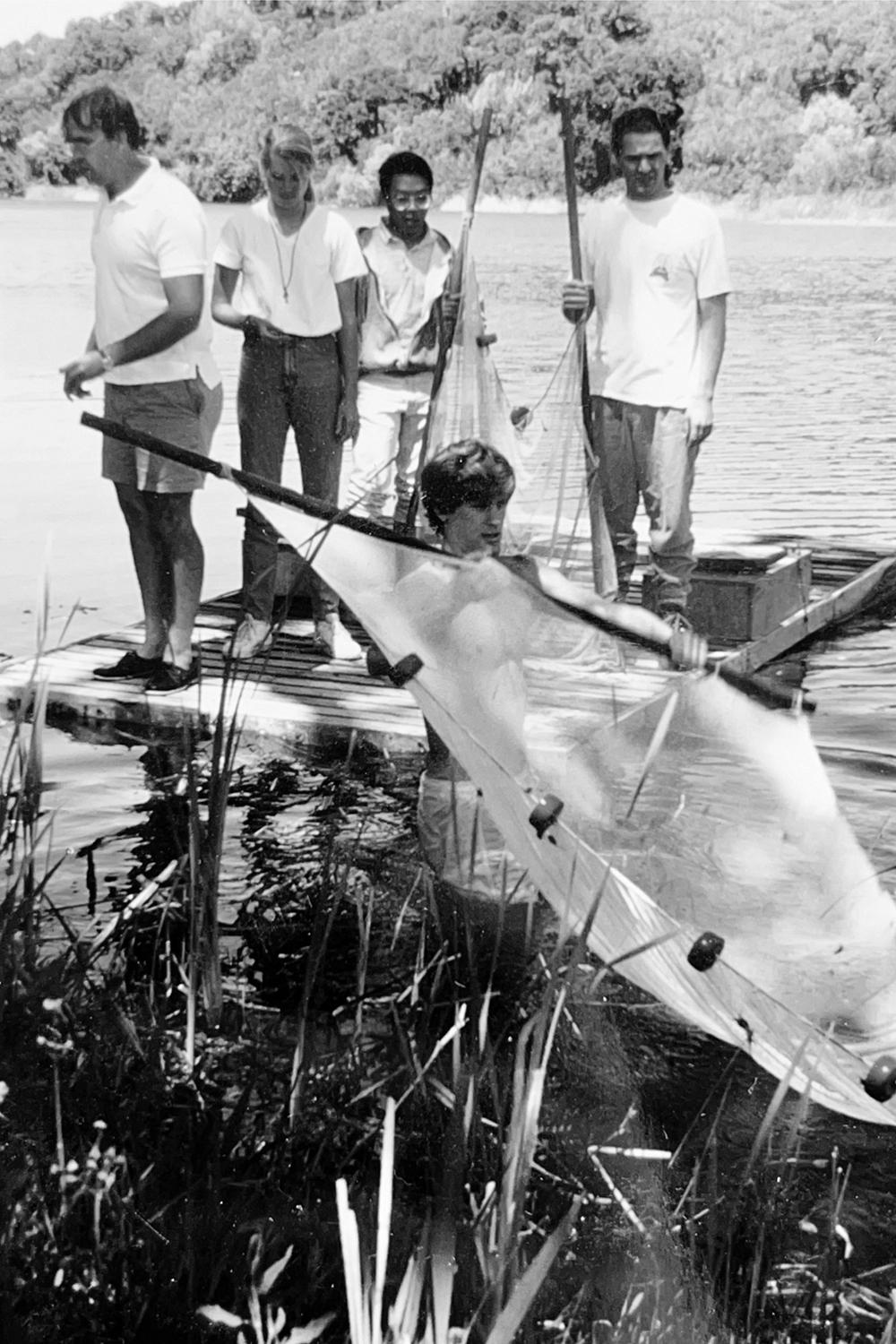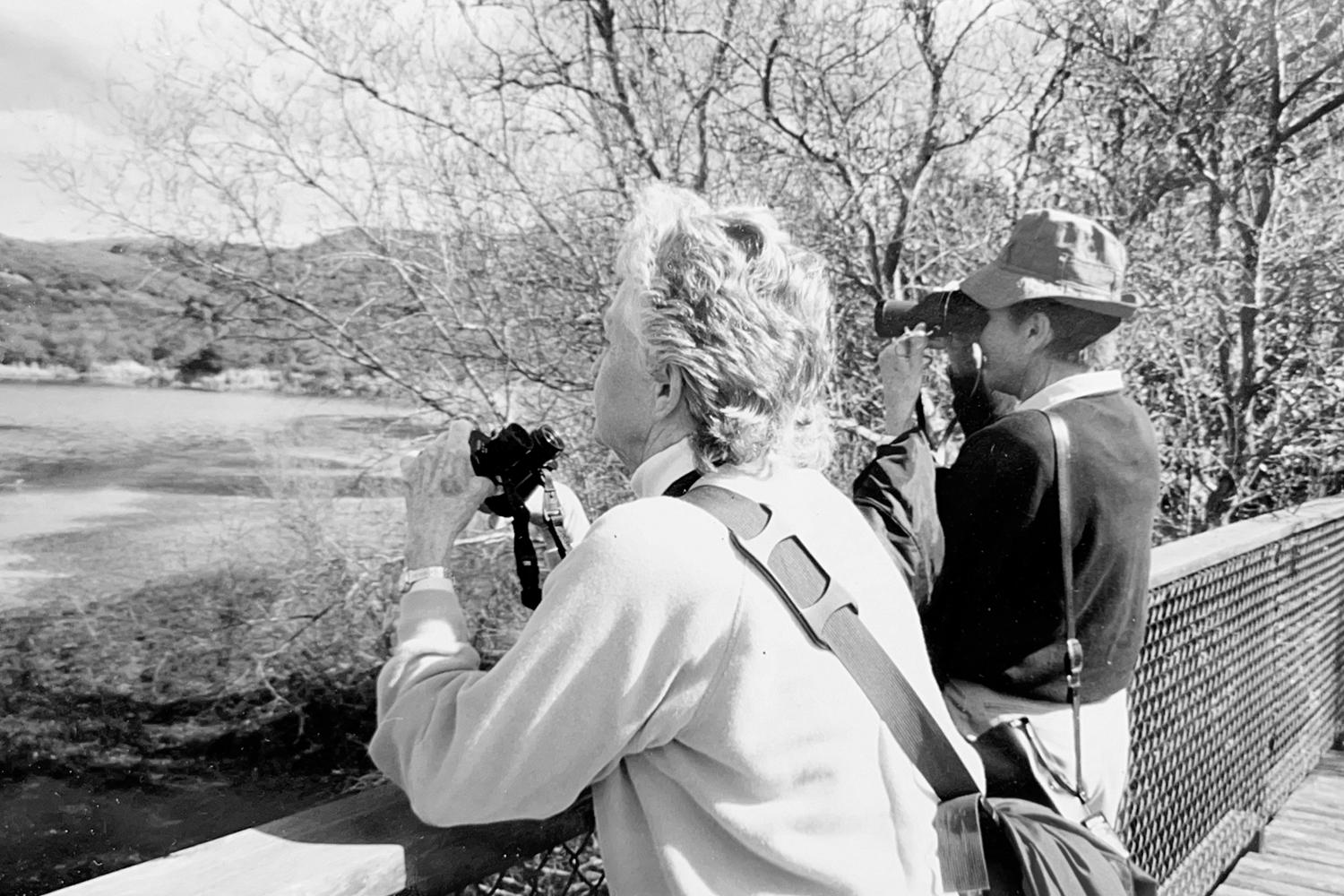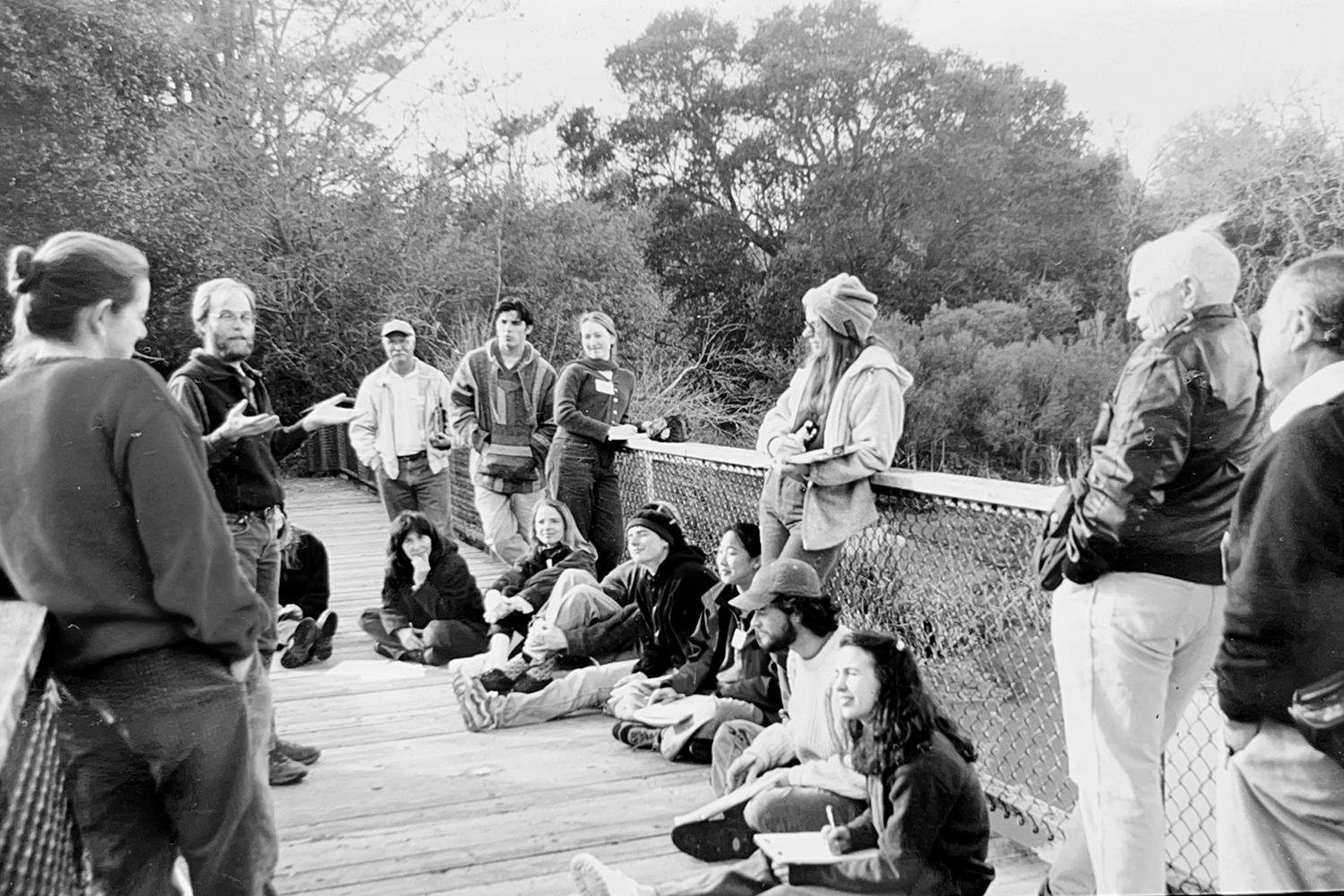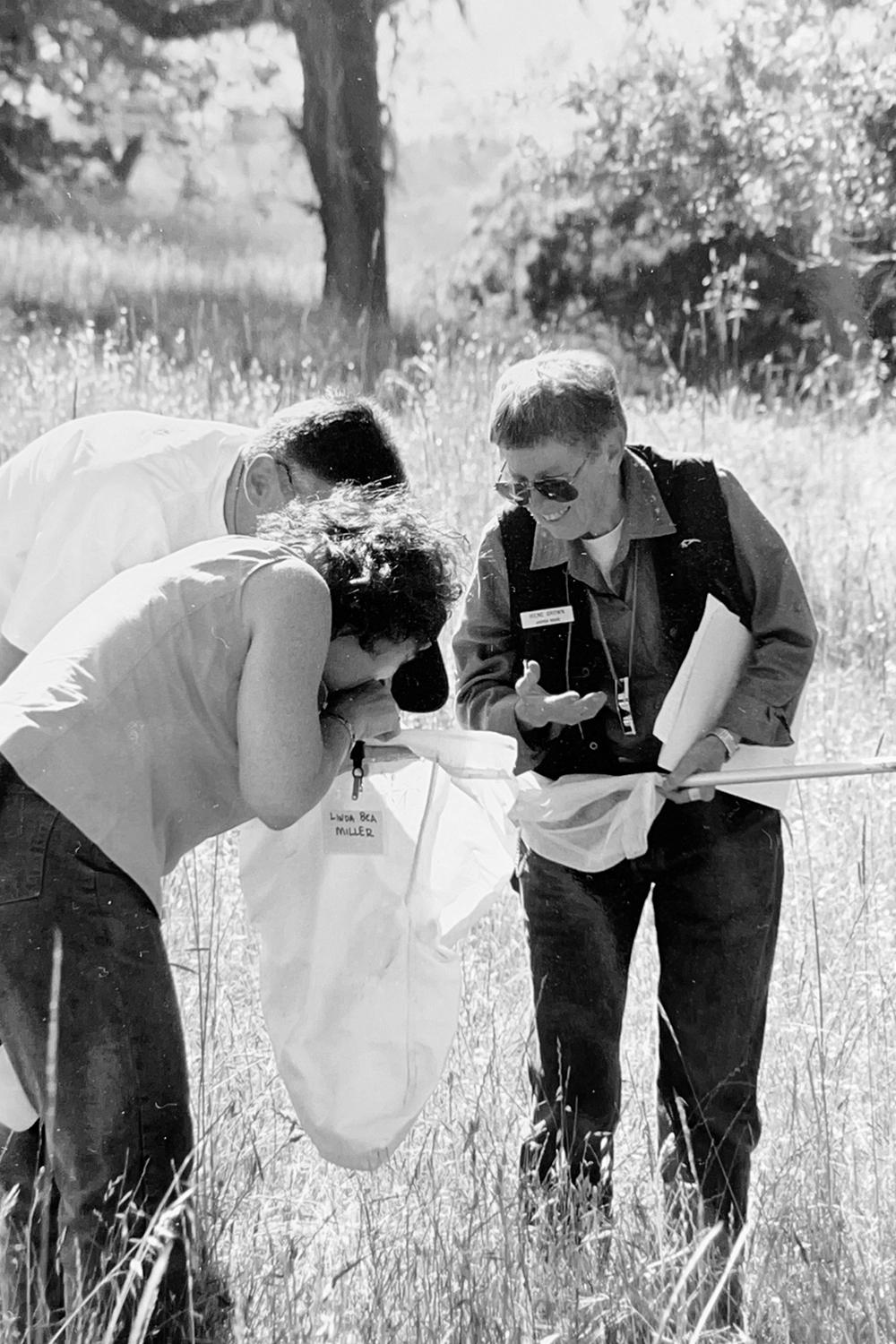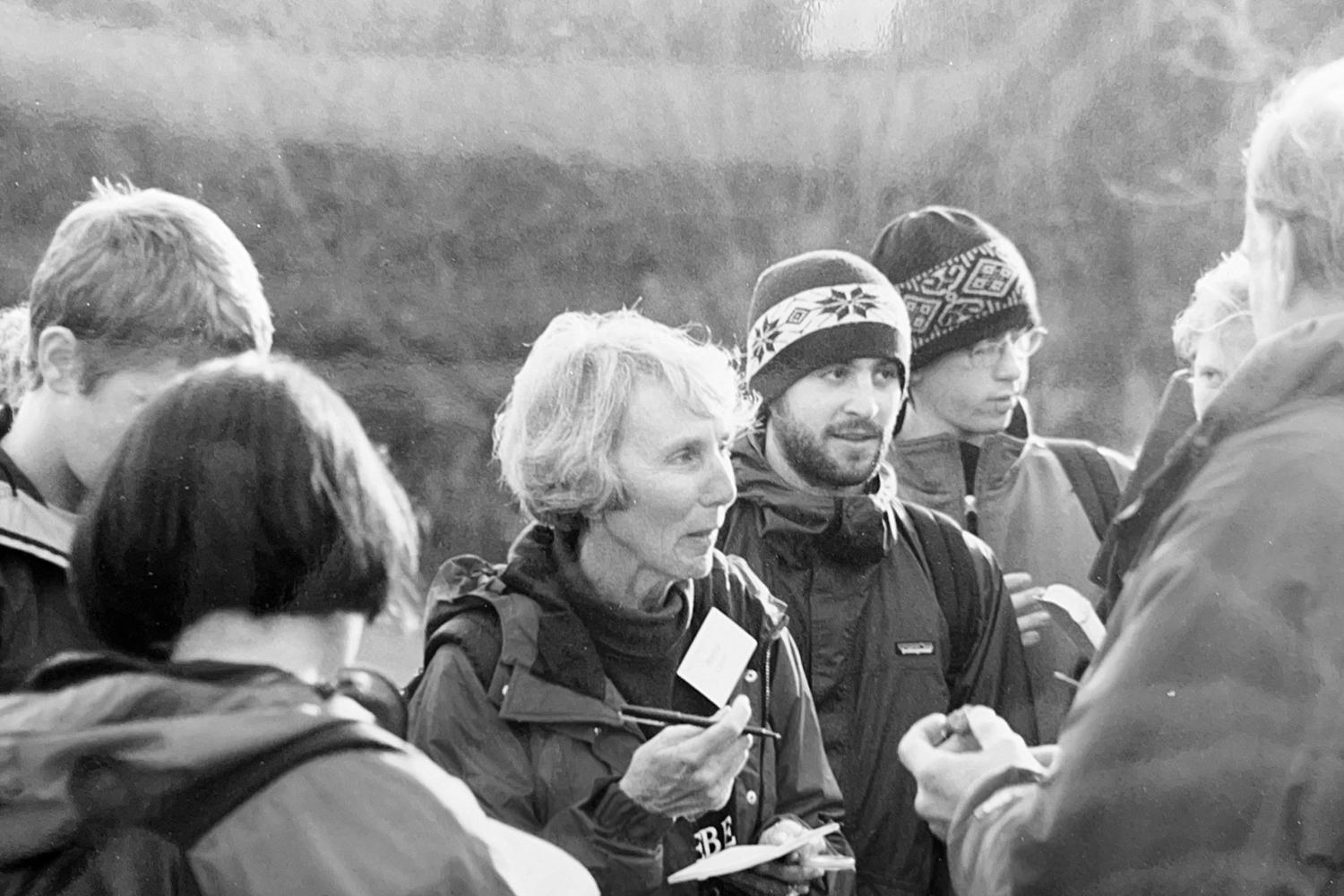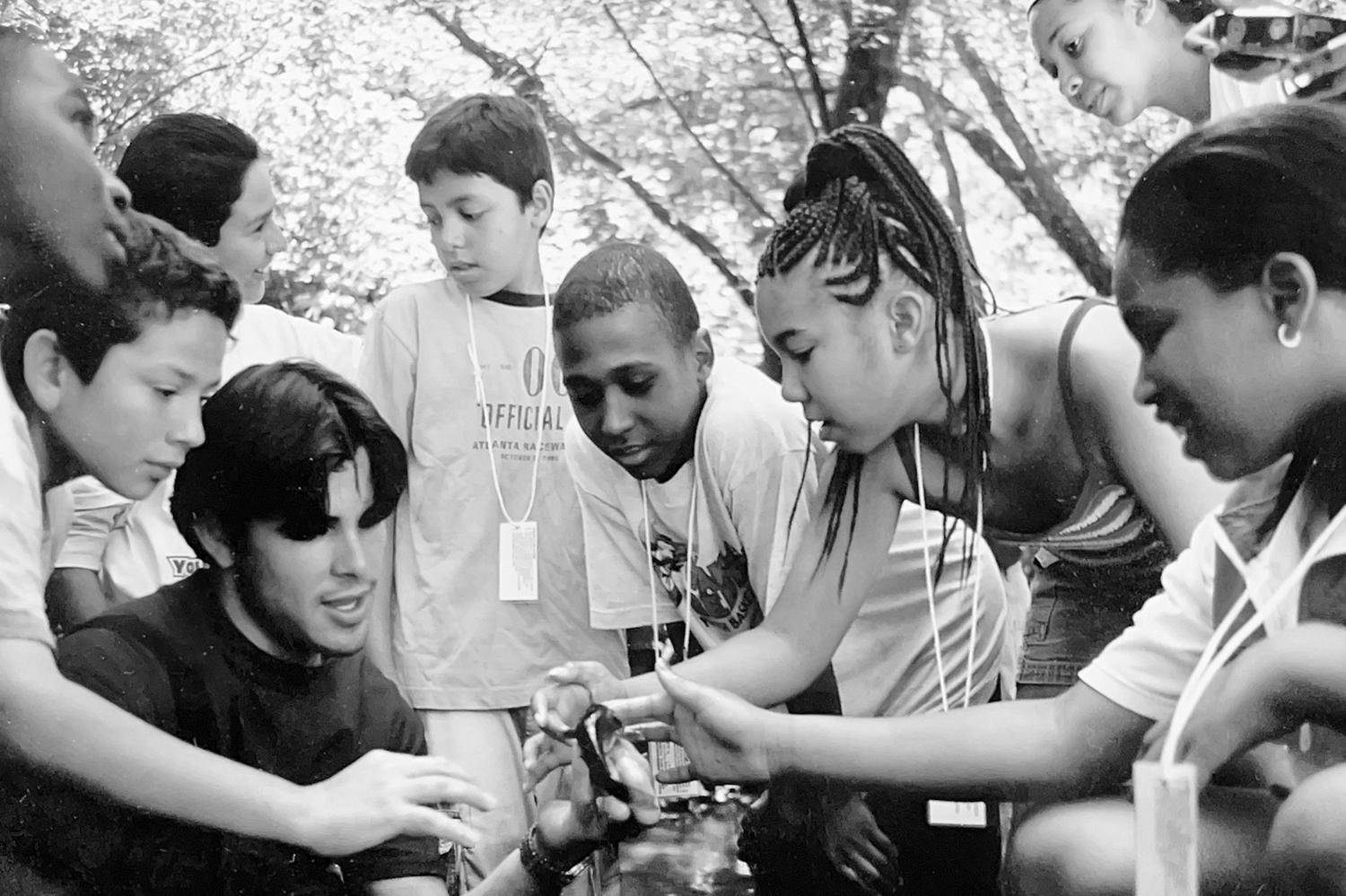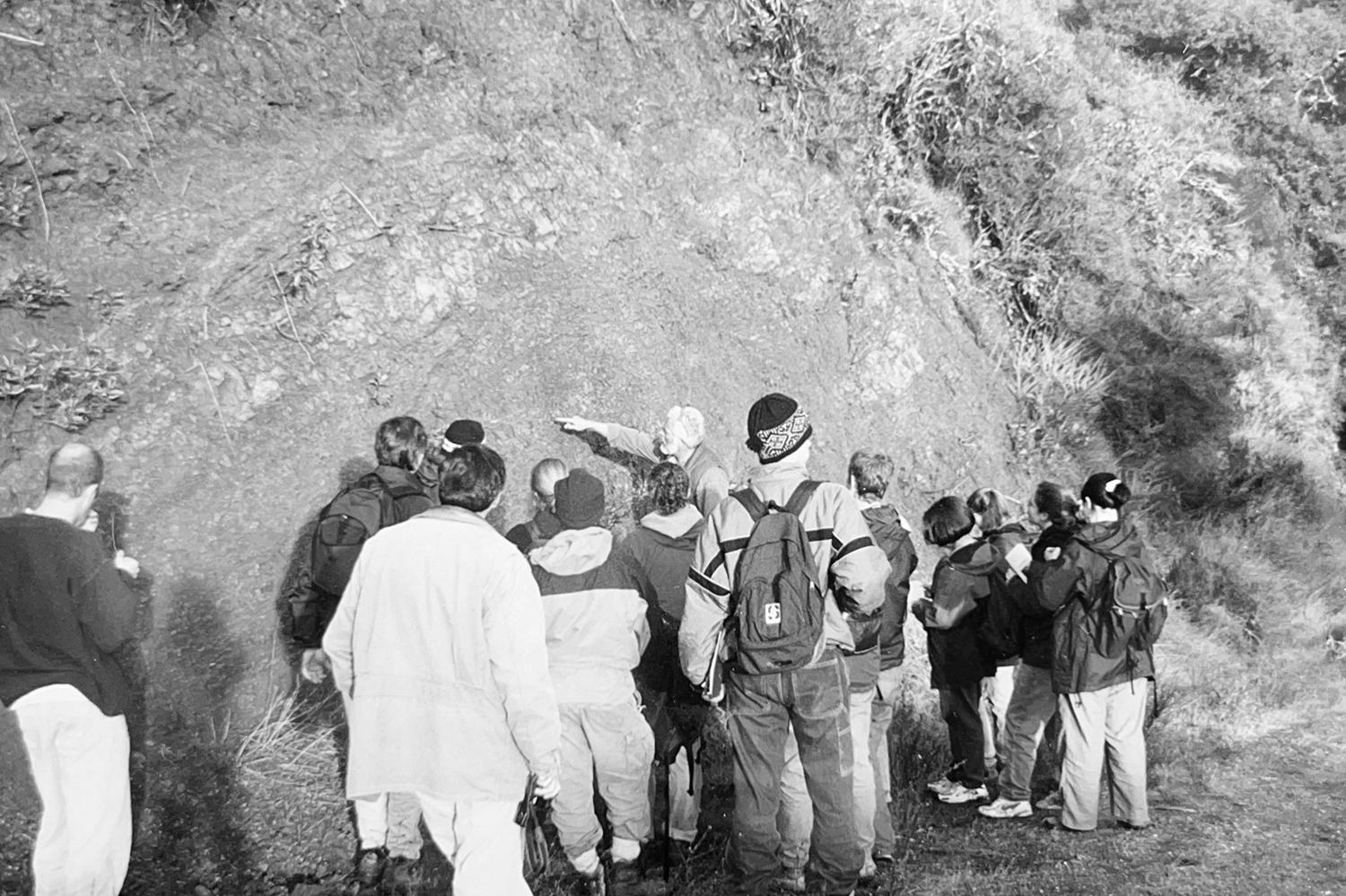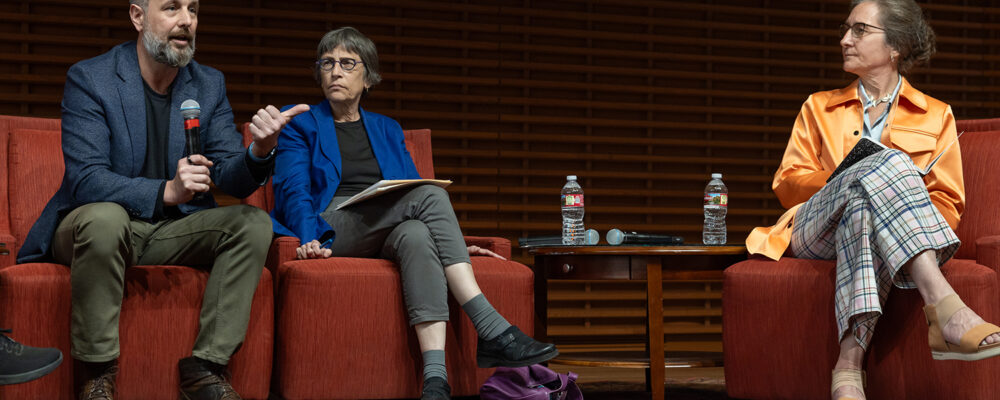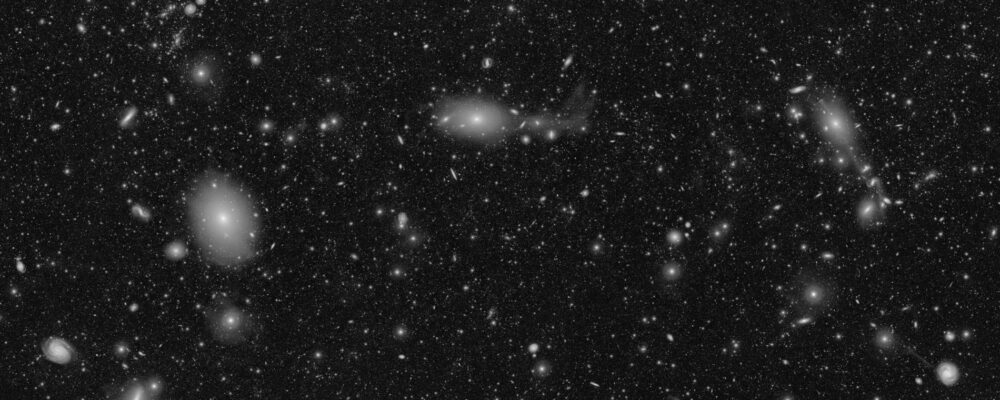Under a bright spring sky, Bob Siegel excitedly led a group on a hike at the Jasper Ridge Biological Preserve (‘Ootchamin ‘Ooyakma), hiking for nearly two hours among verdant chaparral paths, past the roar of the cascading Searsville Dam, and into the quiet hush of a redwood grove.
Along the way, Siegel carefully lifted logs to look for snakes, frogs, and salamanders. He explained the different types of lichens on trees, and a tour member exclaimed “wow!” as Siegel pointed out a turkey vulture gliding overhead. There was also frequent laughter.
“What are the top four dangers while hiking at Jasper Ridge?” he asked. The answer? Ticks, poison oak, twisted ankle – and dad jokes.
Siegel, a professor of microbiology and immunology at the School of Medicine, has been a Jasper Ridge docent for 16 years. “I love seeing people, especially people who haven’t been up there, amazed that we have this beautiful place so close to us,” he said. “That’s always fun. There’s also an amazing aspect of being a docent where there’s enrichment activities, lectures, and you meet all kinds of people who are experts in different things. It’s very rewarding.”
Multiple cameras hung from Siegel, an avid photographer, during the hike as he captured images of Jasper Ridge’s abundant natural beauty. His photography fills Jasper Ridge’s brochures and annual reports. “I use cameras as a tool for learning about the natural world,” Siegel said. “I thoroughly enjoy teaching and sharing nature with other people.”
Stewardship and education
For 50 years, the docents at Jasper Ridge have played a vital role in sharing the ecological and environmental science wonders of Jasper Ridge. They also play a critical role in preserving the unique ecosystem and history of the 1,193-acre preserve.
Jasper Ridge was founded in 1973, and the first docent class was created in 1975 as a community education program. More than 800 people have served as docents since the program began, with around 100 currently active.
Many have been involved since the early years. “Collectively, they have more institutional knowledge than anyone else, and their knowledge is really unique in terms of how specific it is to Jasper Ridge,” said Jasper Ridge Executive Director Jorge Ramos. “Some of them remember the preserve when vegetation was different. They are all experts on something.”
Docents walk the trails more than staff, Ramos said, and are often the first to spota rare plant or invasive species. “They are a big resource for us and help us a lot when making land management decisions at Jasper Ridge,” Ramos said.
The docent program began as a way to engage community members after Jasper Ridge transitioned from a public park to a closed research reserve. The first Stanford students were incorporated into the docent program in 1977, and the docent program is now run through the preserve’s education office.
Today, becoming a docent requires completing a rigorous Stanford course, Ecology and History of Jasper Ridge, taught by Rodolfo Dirzo, the Bing Professor in Environmental Science, professor of Earth system science, and senior fellow at the Woods Institute for the Environment.
Each year, a committee selects 15 Stanford students and five community members to become docents. Students conduct place-based independent research projects that contribute data, education, and outreach to the preserve.
Docents lead an average of 4,000 visitors a year, including Stanford affiliates, Bay Area organizations and schools, and the public. In the 2023-24 academic year, they hosted visitors from all seven Stanford schools, SLAC, and 42 different Stanford-affiliated programs, departments, and student organizations.
Courtesy Jasper Ridge Biological Preserve (‘Ootchamin ‘Ooyakma)
Close
“All tours are held by docents,” Ramos said. “We wouldn’t be able to offer that educational resource to Stanford classes and to other educational organizations in the region without them.”
Docents have diverse areas of expertise, and no two tours are the same, Ramos said.
“Each docent may take a different trail, and each docent has their own unique story to tell about the preserve,” he explained. “All docents share the core pillars of ecology and environmental science but each person has a different take – one person might know a lot about water quality while another knows more about mountain lion research. Our partners love that element of surprise.”
Last year, a dozen docents also supported graduate and undergraduate students with seven research projects ranging in topics from understanding invasive-native plant competition to identifying host plants for parasitic plants.
Tadashi Fukami, the faculty director of Jasper Ridge, said docents have been essential to the preserve’s success in research and education over the last 50 years.
“Collectively, docents have provided countless volunteer hours helping students and researchers with their field work,” Fukami said. “They uniquely provide long-term continuity in the monitoring of plants, birds, ants, and everything in between at the preserve, something indispensable in understanding the natural history of the local landscape. They are also a dependable, constant source of moral support to students and researchers. Their sense of wonder is contagious and inspiring.”
‘A labor of love’
This year, the docent program received the Stanford Alumni Associates Award of Merit in honor of docents’ outstanding contributions to research, education, and stewardship of the preserve.
Dawn Neisser, ’79, and Julien Wright-Ueda, BS, MS ’22, accepted the award on behalf of the docent community in honor of their work, which has led to the digitization of more than 6,000 plant specimen records and the publication of long-term avian research, respectively.

Docents Julien Wright-Ueda, BS, MS ’22, and Dawn Neisser, ’79, accepted the Stanford Alumni Associates Award of Merit on behalf of docents’ outstanding contributions to research, education, and stewardship of the preserve. | Adriana Hernandez
Neisser became a docent in 2016 following her retirement from the tech industry. She soon joined the preserve’s Oakmead Herbarium group, a team of experienced botanists who conduct weekly plant surveys, teach classes, and develop and maintain the preserve’s plant specimen collection.
The collection was in the process of being digitized into a new system within the California Consortium of Herbaria, and Neisser realized her tech background made her uniquely qualified to help with the daunting task. Over the course of several years, Neisser led the effort to fully digitize the collection and make it available to researchers worldwide.
“It’s a labor of love with many volunteer hours and years of dedication and support in helping to create and maintain that collection,” Neisser said. “I found my way to be able to give back to the people who had been teaching me and building this incredible collection.”
Each docent may take a different trail, and each docent has their own unique story to tell about the preserve.”
Jorge RamosJasper Ridge Executive Director
For Neisser, the docent program represents a “unique opportunity to participate, contribute, and learn from the preserve in a really powerful way.”
“Jasper Ridge is a hidden gem, with so many places where people have devoted amazing time, energy, and effort to scientific knowledge,” she added. “It feeds my soul to learn and develop ways to share knowledge with other visitors to the ridge.”
In 2020, Wright-Ueda became a docent while earning his bachelor’s and master’s degrees in biology. For his senior thesis, Wright-Ueda recorded population trends for 66 different bird species by analyzing 31 years of bird data at Jasper Ridge, which docents began collecting in 1979. The resulting dataset is now a key resource for researchers studying avian diversity and conservation, and long-term ecological trends.
Hundreds of docents have contributed to the community science effort, with teams performing monthly surveys across the preserve.
“That really shows the dedication to conservation, nature, and science that a lot of the Jasper Ridge community has, and I feel very fortunate to leverage that dedication and that science to understand more of the ecology of the preserve,” Wright-Ueda said.
He also later became a teaching assistant for the docent course.
“Jasper Ridge is a deeply special place for me from an educational standpoint – from learning how to do bird banding at the site, to learning how to analyze and manage data, to learning how to publish a paper,” Wright-Ueda said. “All of those opportunities were given to me through Jasper Ridge one way or another.”
“Stanford University, officially Leland Stanford Junior University, is a private research university in Stanford, California. The campus occupies 8,180 acres, among the largest in the United States, and enrols over 17,000 students.”
Please visit the firm link to site


